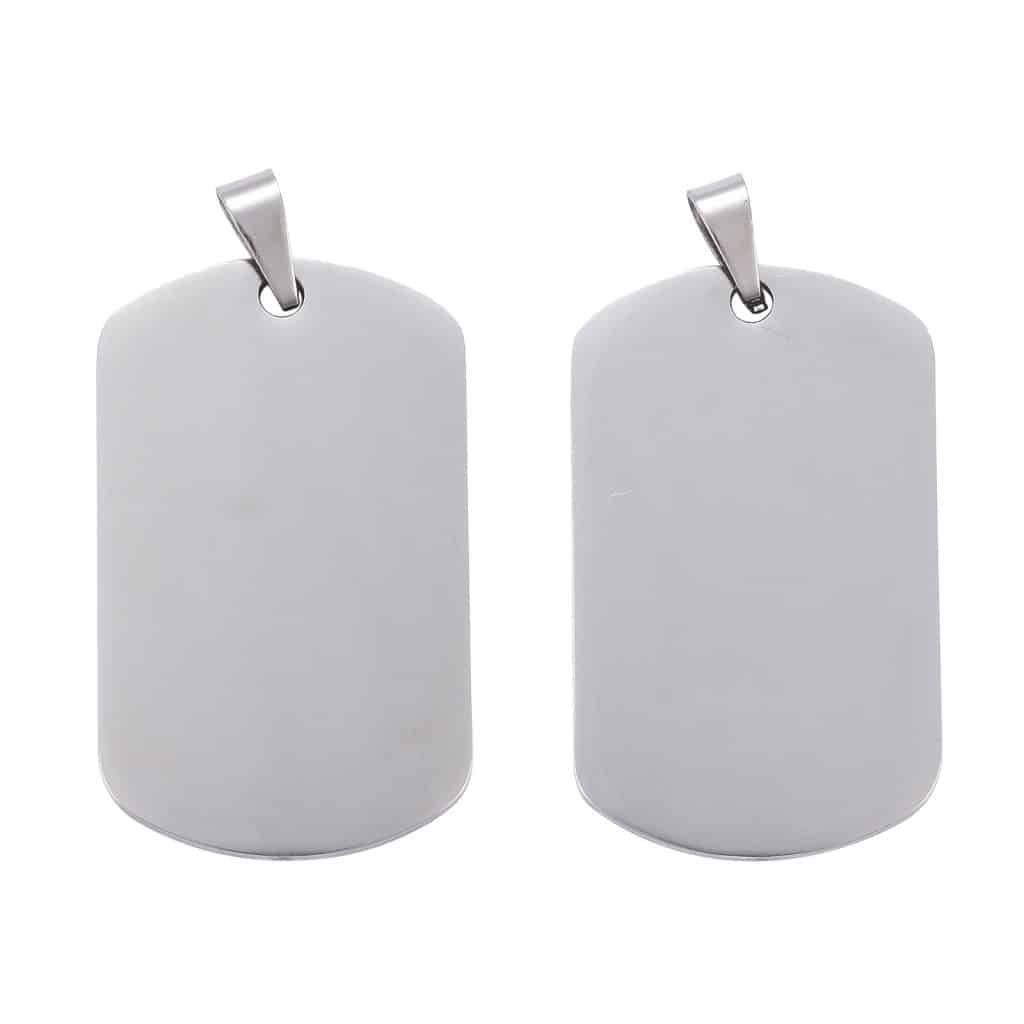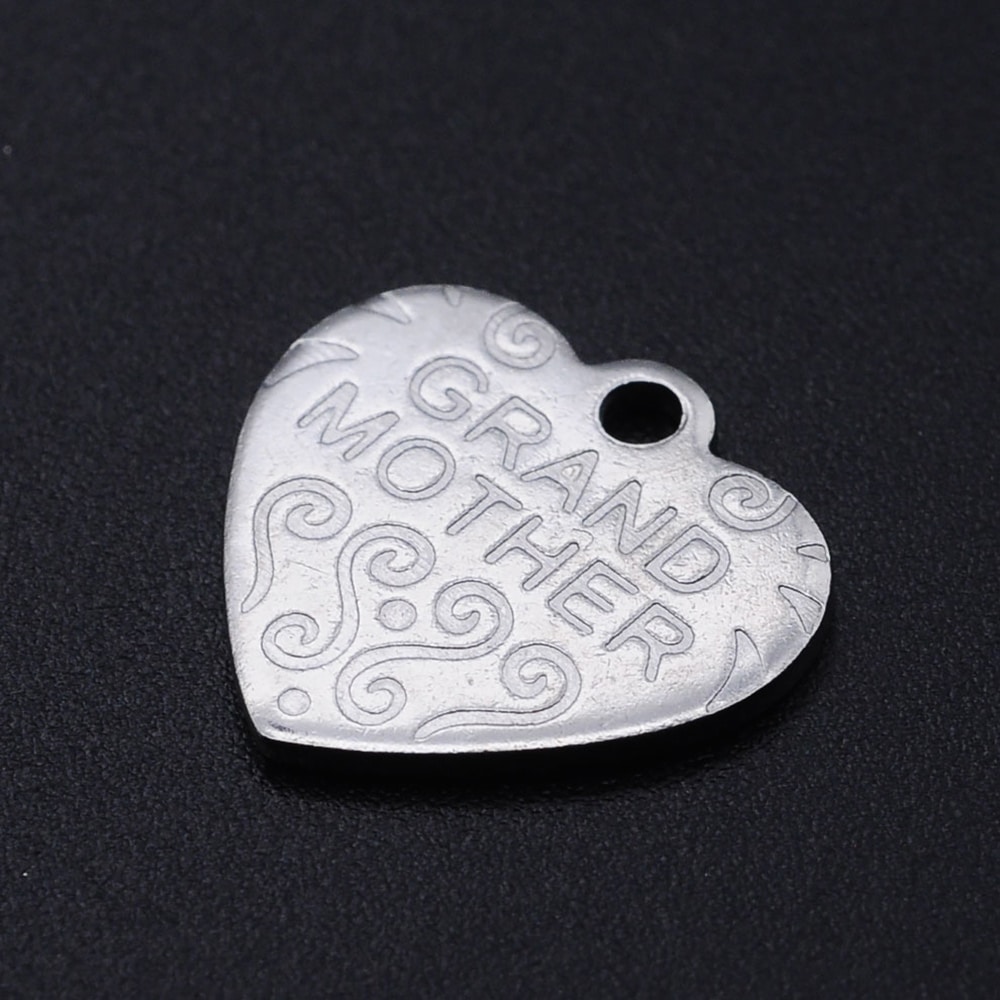In today’s era of pursuing individuality and uniqueness, custom pendants have become the choice of more and more people. Whether as an ornament for daily wear or as a souvenir with special meaning, customized pendants can perfectly meet personal needs. However, when choosing a customized pendant, how to choose the right etching process and pattern has become a problem that needs careful consideration. This article will introduce the etching process of customized pendants and their selection methods in detail, and provide some suggestions for pattern design, hoping to help you find your favorite customized pendant.
Table of Contents

Understand the etching process of custom pendants
The etching process is a technology that forms a concave and convex pattern on the metal surface by chemical or physical methods. In custom pendants, the etching process can not only increase the beauty of the pendant, but also give it a unique texture and artistic value. The following are several common etching processes:
Hand etching
Hand etching is a traditional and delicate process, usually performed by hand by experienced craftsmen. The pattern is engraved on the metal surface with a carving knife, and then corroded with acid to form a texture of varying depths. The lines of the hand-etched pattern are smooth and natural, and each piece is unique.
Laser Etching
Laser etching is a modern process that uses a laser beam to quickly and accurately carve patterns on metal surfaces. The patterns etched by lasers have clear edges and rich details, which are suitable for making complex patterns and texts. In addition, laser etching can also achieve a multi-level pattern effect, increasing the three-dimensional and layered sense of the pendant.
Mechanical Etching
Mechanical etching is a process in which pressure is applied to the metal surface by a mechanical device to form a pattern. The lines of the pattern etched by mechanical means are uniform and neat, which is suitable for making simple geometric patterns and lines. Although the patterns etched by mechanical etching are not as fine as those etched by hand and laser, they are less expensive and suitable for batch production.
Chemical Etching
Chemical etching is a process in which a pattern is formed on the metal surface through a chemical reaction. Usually, a layer of resist is first applied to the metal surface, and then part of the resist is removed according to the pattern requirements, and then the metal surface is corroded with acid. The edges of the pattern etched by chemical etching are soft and the transition is natural, which is suitable for making patterns with gradient effects.
Choose the right etching process
When choosing an etching process for a custom pendant, you need to consider the following factors:
Budget
Different etching processes have different costs. Manual etching and laser etching are usually more expensive, while mechanical etching and chemical etching are relatively cheap. Therefore, when choosing an etching process, you should make a reasonable choice based on your budget.

Pattern complexity
Manual etching and laser etching are suitable for making complex patterns and texts, while mechanical etching and chemical etching are more suitable for making simple patterns. If your custom pendant needs to contain fine details and complex patterns, then manual etching or laser etching will be a better choice.
Personalized needs
If you want your custom pendants to have a unique artistic style and personalized characteristics, then manual etching will be a good choice. Each piece of hand-etched work is unique and can fully show your personality and taste.
Material
Metals of different materials have different adaptability to etching processes. For example, some metals may be more suitable for manual etching, while others are more suitable for laser etching. When choosing an etching process, consider the characteristics of the metal material and its adaptability to the etching process.
Design a suitable pattern
After choosing the right etching process, the next thing to consider is the design of the pattern. The pattern design of a custom pendants are not only about aesthetics, but also about its meaning and symbolism. Here are some suggestions for designing patterns:
Personal preferences
The first thing to consider when designing a custom pendant is personal preferences. You can choose a pattern based on your interests, hobbies or personality traits. For example, people who like animals can choose animal patterns, and people who like music can choose musical note patterns.
Special meaning
Custom pendants usually have special meanings, such as commemorating an important moment, expressing a certain emotion, or implying a certain blessing. When designing a pattern, you can incorporate these special meanings to make the pendant more commemorative and emotional. For example, you can engrave an important date, name or blessing on the pendant.
Simple and clear
Although complex patterns can show more details and beauty, simple and clear patterns are often more attractive in custom pendants. Simple patterns are not only easy to identify, but also better highlight the texture and craftsmanship of the pendant. Therefore, when designing a pattern, try to keep it simple and clear, and avoid being too complicated and cumbersome.
Match with the material
Metals of different materials have different adaptability to patterns. For example, some metals may be more suitable for delicate lines and soft patterns, while others are more suitable for bold lines and bright patterns. When designing a pattern, consider the characteristics of the metal material and its adaptability to the pattern so that the pattern and the material complement each other.
Consider the size
The size of the custom pendant is also a factor to consider when designing a pattern. The size of the pendant will affect the presentation of the pattern. If the pendant is small, the pattern should be simplified accordingly to avoid being too crowded and blurred. On the contrary, if the pendant is large, the pattern can be more complex and delicate.

Reference to classic elements
When designing a pattern, you can refer to some classic elements and symbols. These classic elements not only have a profound cultural heritage and symbolic meaning, but also make the pendant more fashionable and artistic. For example, you can refer to classic elements such as geometric figures, natural elements or religious symbols to design a pattern.
Combine with popular trends
As fashion trends continue to change, the pattern design of custom pendants should also keep pace with the times. You can pay attention to the current trends and hot elements, and incorporate these elements into the pattern design to make the pendant more fashionable and attractive.
Communicate with the designer
If you are not good at pattern design or have no inspiration, you can communicate with a professional designer. The designer can tailor a unique pattern design for you according to your needs and preferences. When communicating with the designer, you should clearly express your ideas and expectations so that the designer can better understand your needs and provide you with a satisfactory design plan.
IV. Case analysis
The following is a case analysis of the etching process and pattern design of some custom pendants, hoping to provide you with some inspiration and reference:
Hand-etched animal pattern pendant
This pendant uses hand-etching technology, and the pattern is a cute puppy. The lines of the puppy are smooth and natural, and the hair details are clearly visible. The material of the pendant is 925 silver, which complements the hand-etching process and shows a unique artistic charm.
Laser-etched music symbol pendant
This pendant uses laser etching technology, and the pattern is a set of music symbols. The edges of the music symbols are clear and the details are rich, showing a strong sense of three-dimensionality and layering. The material of the pendant is stainless steel, which is wear-resistant and corrosion-resistant, and is suitable for daily wear.
Mechanically etched geometric pattern pendant
This pendant uses mechanical etching technology, and the pattern is a set of simple geometric figures. The lines of the geometric figures are even and neat, showing a simple and clear beauty. The material of the pendant is copper, which has a unique texture and color, suitable for matching different clothes and occasions.
Chemically etched gradient effect pendant
This pendant uses chemical etching technology, and the pattern presents a gradient effect. The surface of the pendant gradually transitions from the center to the outside, forming a soft sense of layering. The material of the pendant is aluminum alloy, which is light and durable, and is suitable as a daily wear ornament.
The etching process and pattern design of custom pendants is a process that requires comprehensive consideration of multiple factors. When choosing the etching process, factors such as budget, pattern complexity, personalized needs and materials should be considered; when designing the pattern, factors such as personal preferences, special meaning, simplicity and clarity, matching with materials, size, popular trends and communication with designers should be considered. Through reasonable selection and design, you can find a custom pendant that meets your needs and is unique. I hope this article can provide you with some useful information and suggestions to help you find your favorite custom pendant.
